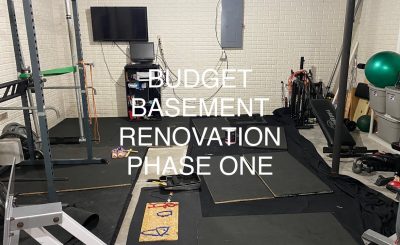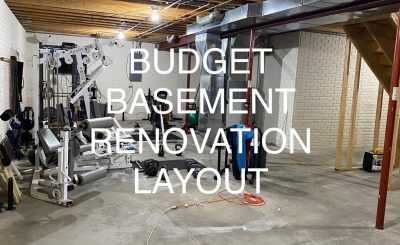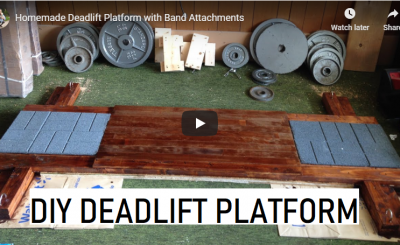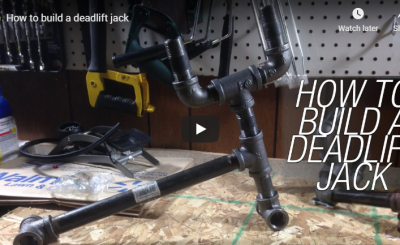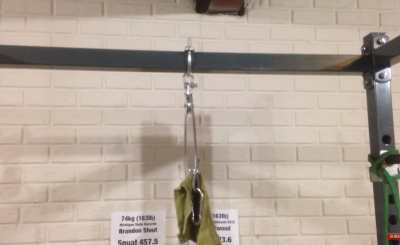Let’s check out some key olympic barbells tips! The olympic barbell is typically a 7′ barbell (well, 86″ actually) that has 2″ sleeves which are the typical hole size of an olympic weight plate. These bars typically weigh 45 pounds and are often part of a home gym starter kit. They are also the key target for gym goers to call dibs on in the gym (because the gym typically has a variety of bars, and the best one is often sought out and held captive. This is somewhat honest and somewhat humor).
Olympic Barbells Tips – Main Barbell Components
There are a few key terms of a barbell to understand before we get into what is important in a barbell when you search. Let’s dive into each component below. One quick note is Olympic bars actually derive from international figures so they would use kg’s for how much they weigh. That means a barbell would likely be 20kg (versus the 45lbs mentioned above as 45lbs is the most common reference). 20kg is the proper weight of an Olympic barbell.
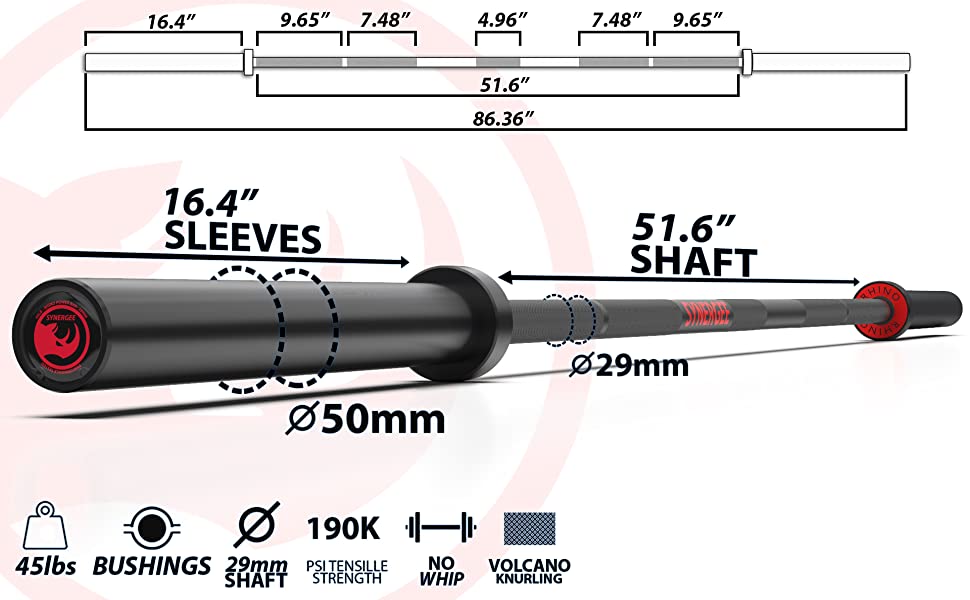
Olympic Barbells Tips – Shaft
The shaft is going to be what is the core of the bar. This runs most of the length of the barbell. It is usually around 28-29mm’s and if larger people tend to notice that due to grip issues. Someone might say “that bar feels thick” or “that bar seems hard to grip”. Chances are that barbell is probably 30mm or slightly larger. It’s interesting that just a slight bump (28mm to 30mm) makes a major change, but it’s noticeable. The shaft length (exposed area) is usually 51-52″.
Olympic Barbells Tips – Knurl
We can’t move passed the shaft until we talk about the knurl. The knurl on a barbell is going to be the raised bumps / ridges on a barbell. If the barbell has a “aggressive”, “deep” or “heavy” knurl then it is likely going to be an excellent barbell for being able to maintain solid grip. These bars tend to be excellent for deadlifts, however can feel like teeth digging into your hands. Some bars will have a center knurl and other’s will simply remain smooth in the center.
Olympic Barbells Tips – Knurl Markings
The bar will have knurl markings (aka rings) on them and have major significance for both olympic lifters as well as powerlifters. These markings are the key to determining proper hand position when attempting a lift. A power bar may have two sets of marks fairly close to each other. Generally the inner rings are bench rings and the outer rings are snatch rings.
Olympic Barbells Tips – Sleeves
The sleeve is where the weight plate is placed. The sleeve tends to have circular ridges or grooves as well when machined. This can help keep the weight plates in place while performing a lift. The sleeve length is typically 16-17″.
Olympic Barbells Tips – Shaft Bearing or Bushing
A barbell will typically have a bearing or a bushing that sits around the shaft and beneath the sleeve. The bearing is going to be a bit more smooth and fast (cleans, snatches). The bushing is going to be more commonly used for power moves (deadlifts, bench pressing). The bar pictured above is considered more of a power bar and has bushings.
Barbells with bearings will also tend to have a higher cross.
Olympic Barbells Tips – What to look for in a barbell
Barbells tend to follow the guidelines of major powerlifting organizations like the IPF. These barbells tend to be the most comfortable as they are the most commonly used barbells. The key variance would end up being in the first noted area below.
Olympic Barbells Tips – Shaft Diameter – Barbells tend to be between 28mm to 30.5mm’s. 28mm is the specified diameter for the IPF. Gyms seem to have barbells that are around 29mm’s as they are slightly thicker than IPF guidelines. As mentioned earlier a thicker bar tends to be something that feels harder to grip (and now it may be more obvious so you can be on the lookout).
Olympic Barbells Tips – Knurl – Knurl again is the ridge or raised area on the barbell. There is a smooth area that will allow the barbell to pass up along your legs smoothly and is purposely left knurl free. The knurl that is aggressive is best for things like a deadlift. A light knurl (like the CAP Beast Barbell) tends to be better for those new to the gym. The knurl can be tough to handle and can feel like it cuts into the hand (but will not literally cut you).
Olympic Barbells Tips – Tensile Strength (pressure required to bend a barbell) – The barbell tensile strength is figured by actually bending the barbell to determine how much pressure is necessary to bend or fracture the bar. A barbell should have a tensile strength of 105,000 PSI or higher. If the PSI is not mentioned, it would be wise to pass it up.
The CAP Beast Barbell has a 110,000 PSI and is stated to handle around 1200-1500 lbs. That is mentioned as it was originally listed at withstanding 1200 lbs but then updated to 1500 lbs. If you are lifting more than 600 lbs consistently, the CAP Barbell is likely not the bar for you anyways (it’s considered an intro bar, so you’d be looking towards the Rogue series of bars or similar).
Olympic Barbells Tips – Barbell Finish (i.e. raw or coated) – There are many different coatings to a barbell. Raw is just that as it’s raw steel so it can have a tough look. This will require a high level of maintenance. Next up is chrome but these bars are a bit shiny and can look cheap. Then the bar can be phosphate coated (usually black) and can help limit rust. Finally, there is a cerakote which has become more sought after by those building out top quality home gyms. The finish allows for more durability of the bar as it limits rust and provides higher resistance to common gym elements.
Olympic Barbells Tips – Whip – We will not nay-nay here (who remembers that song?). This refers to how much flex or bend a bar will have as you unrack or perform a lift. Whip can be hard to control and can throw off the speed of a lift and the balance of a lifter. Olympic lifters would prefer a decent level of whip as they expect it and it allows for better momentum of a given lift.
Olympic Barbells Tips – Center Knurl Or Not – A center knurl is the knurl in the very center of a bar. This is useful for squatting as it allows the bar to remain in better position (and not slip) during the squat. Olympic lifters typically don’t want a center knurl as the bar needs to be able to travel in a smooth path up the body. A center knurl can disrupt that path and create drag (because it’s not smooth).
There we have it! It shouldn’t have been too painful. If you have any questions, feel free to comment below.
Olympic Barbells Tips – Amazon Barbells
Now is your chance to grab one and put it to the test!
Cap “Beast” Barbell – This was my first barbell purchase long ago and I have no regrets. It doesn’t have a center knurl but I used some athletic tape to fix that. It is the most popular Olympic barbell on Amazon. https://amzn.to/2GCxdAE
Cap “Boss” Barbell – This barbell has a center knurl which helps solve the problem of no center knurl. The bar also gains some tensile strength. It also costs a little more than the Beast. https://amzn.to/3jRPhF9
Synergee “Regional” Barbell – This bar is a slight step up from the Boss barbell in that it has a 1500lb weight rating. All other features are fairly similar. https://amzn.to/3bwtmQS
Cap “Warrior” Barbell – This bar has both knurl markings, has center knurl, a higher tensile strength, and moves you from bushings to bearings. https://amzn.to/3bz6Uql
Synergee “Rhino” Barbell – This is the top of the line barbell from Synergee and moves into a cerakote finish. This finish tends to help with the bar longevity (similar to layers of clear coat for car paint). Treat these bars well and they’ll last a lifetime. https://amzn.to/2F7W5jb
Remaining bars can be found on their respective websites like Rogue, EliteFTS, or Kubaki Strength. These are fantastic bars and tend to sell themselves.
For more in depth insight on topics like Olympic Barbells Tips, please check out the My DIY Gym section, by clicking here.

